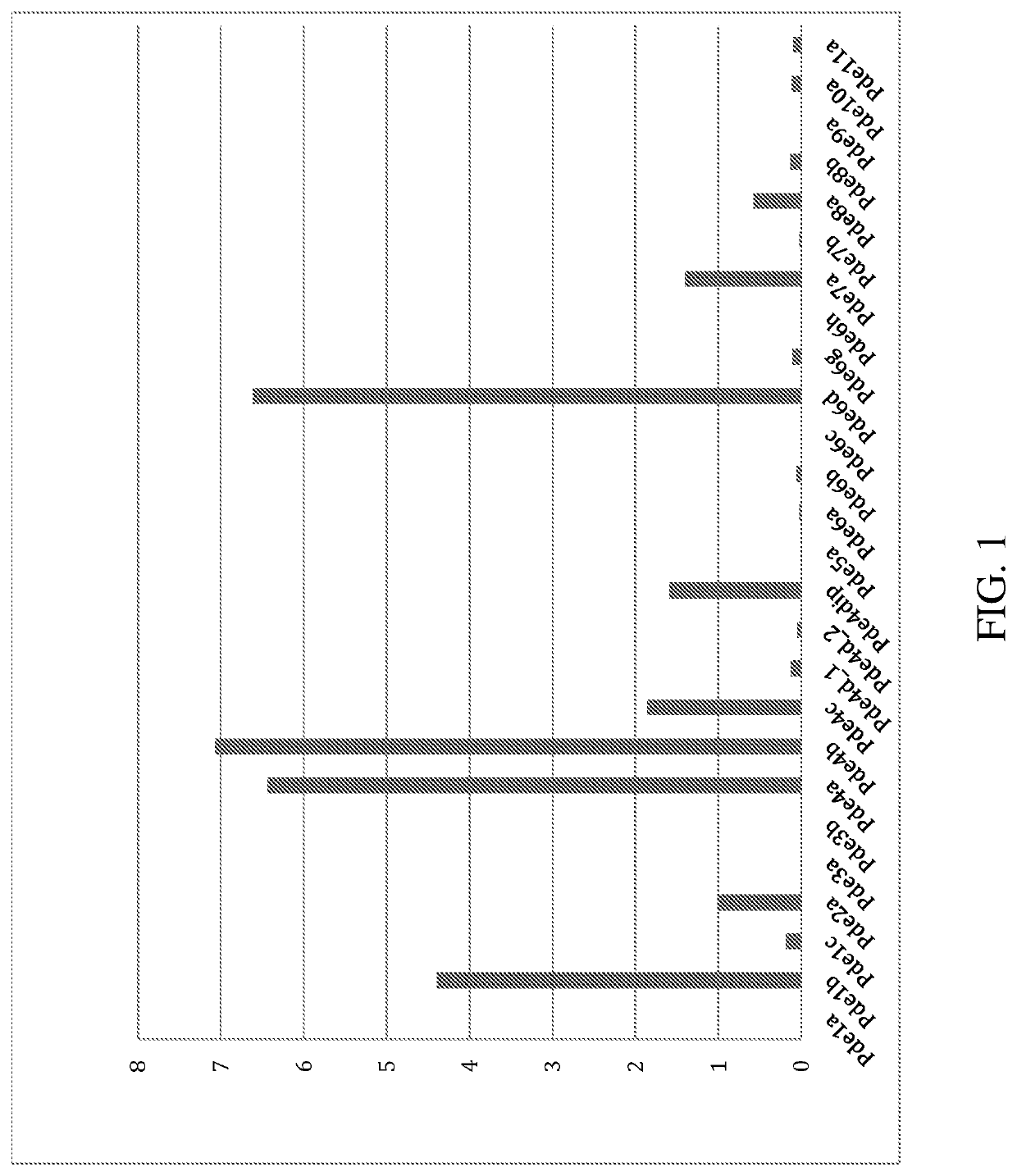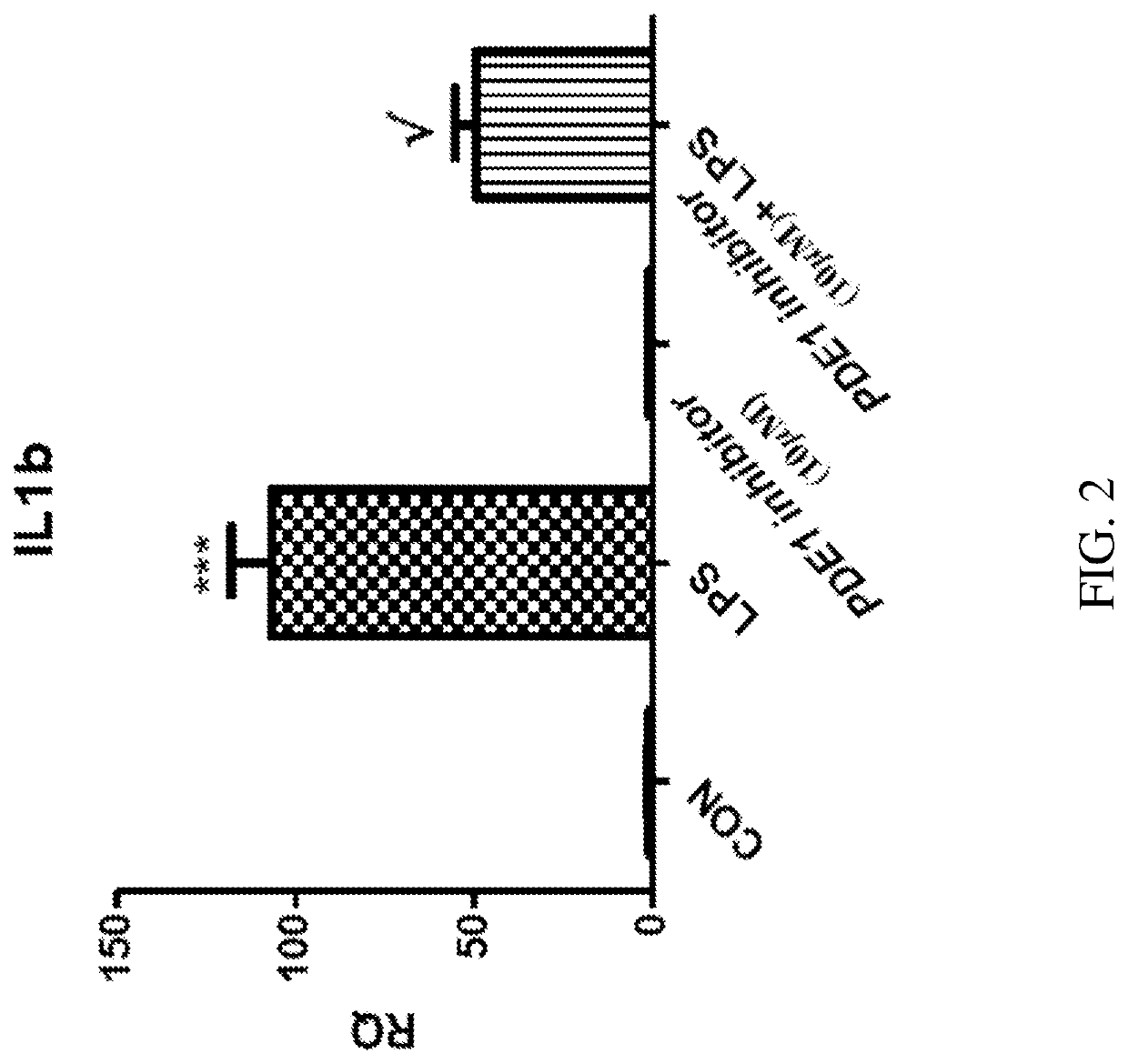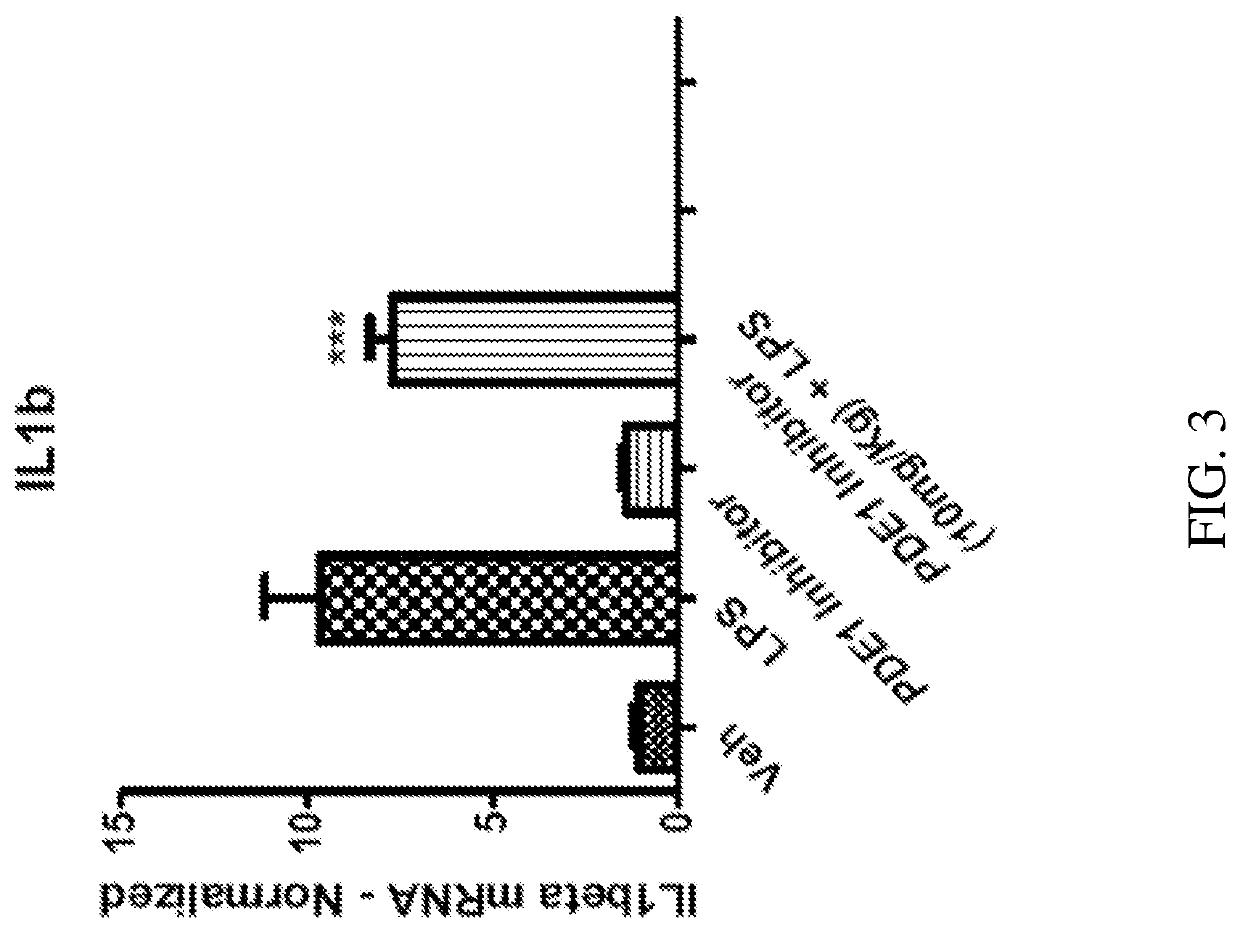Novel uses
a technology of phosphodiesterase and inhibitors, applied in the field of inhibitors of phosphodiesterase 1 (pde1), can solve the problems of ununderstood mechanisms and actions, and achieve the effect of increasing the production of anti-inflammatory cytokines and reducing damaging pro-inflammatory cytokine signaling
- Summary
- Abstract
- Description
- Claims
- Application Information
AI Technical Summary
Benefits of technology
Problems solved by technology
Method used
Image
Examples
example 1
Measurement of PDEIB Inhibition In Vitro Using IMAP Phosphodiesterase Assay Kit
[0581]Phosphodiesterase I B (PDEIB) is a calcium / calmodulin dependent phosphodiesterase enzyme that converts cyclic guanosine monophosphate (cGMP) to 5′-guanosine monophosphate (5′-GMP). PDEIB can also convert a modified cGMP substrate, such as the fluorescent molecule cGMP-fluorescein, to the corresponding GMP-fluorescein. The generation of GMP-fluorescein from cGMP-fluorescein can be quantitated, using, for example, the IMAP (Molecular Devices, Sunnyvale, Calif.) immobilized-metal affinity particle reagent.
[0582]Briefly, the IMAP reagent binds with high affinity to the free 5′-phosphate that is found in GMP-fluorescein and not in cGMP-fluorescein. The resulting GMP-fluorescein—IMAP complex is large relative to cGMP-fluorescein. Small fluorophores that are bound up in a large, slowly tumbling, complex can be distinguished from unbound fluorophores, because the photons emitted as they fluoresce retain the...
example 2
[0589]Inhibition of Monocyte to Activated Macrophage Transition and Interaction with ANP
[0590]PDE1 is induced in the inflammatory monocyte-to-activated-macrophage transition mediated by GM-CSF, and this transition can be inhibited by PDE1 knockdown. Bender and Beavo, 2006 PNAS 103, 460-5. Atrial natriuretic peptide (ANP) elevates cGMP levels, by activating the ANP catalytic receptor, which stimulates intracellular guanylyl cyclase activity to convert GTP to cGMP. ANP has an anti-inflammatory effect on macrophages, reducing the secretion of inflammatory mediators in macrophages. Kiemer, et al., Ann Rheum Dis. 2001 November; 60(Suppl 3): iii68-iii70. Specifically, ANP inhibits the lipopolysaccharide (LPS)-induced expression of inducible nitric oxide synthase (iNOS) in macrophages, reduces the activation of NF-κB, inhibits the macrophage release of TNFα and interleukin 1β (IL1β), but not secretion of the anti-inflammatory cytokines IL10 and IL1 receptor antagonist (ILlra).
[0591]We have...
example 3
Effect of PDE1 Inhibitors on Microglia-Derived Cells
[0593]Neuroinflammatory processes are regulated largely by microglia. Microglia have activation states somewhat similar to macrophages and in response to IFN-γ or lipopolysaccharide (LPS), they will be activated to release pro-inflammatory cytokines such as TNF-, IL-1β, and reactive oxygen species / reactive nitrogen species (ROS / NOS). Under other circumstances, they can be activated to release anti-inflammatory cytokines, such as IL-10, and to participate in tissue repair. The immortalized murine microglial cell line BV-2 is used as a model for microglia signaling. Stansley et al. Journal of Neuroinflammation 2012, 9:115.
[0594]BV2 cells are treated with lipopolysaccharide (LPS) and the level of expression of PDE expression is measured using RNAseq analysis. The data are presented in FIG. 1. “FPKM” represents the “Fragment Reads per kilobase of exon per million reads mapped”. After treatment with LPS, an endotoxin associated with the...
PUM
| Property | Measurement | Unit |
|---|---|---|
| temperature | aaaaa | aaaaa |
| pH | aaaaa | aaaaa |
| pH | aaaaa | aaaaa |
Abstract
Description
Claims
Application Information
 Login to View More
Login to View More - R&D
- Intellectual Property
- Life Sciences
- Materials
- Tech Scout
- Unparalleled Data Quality
- Higher Quality Content
- 60% Fewer Hallucinations
Browse by: Latest US Patents, China's latest patents, Technical Efficacy Thesaurus, Application Domain, Technology Topic, Popular Technical Reports.
© 2025 PatSnap. All rights reserved.Legal|Privacy policy|Modern Slavery Act Transparency Statement|Sitemap|About US| Contact US: help@patsnap.com



